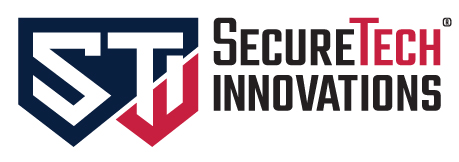Blockchain
Mobile Wallet Market Share is Projected to Reach USD 750.3 Billion By 2028: Zion Market Research

Blockchain
Blocks & Headlines: Today in Blockchain – May 20, 2025

Blockchain innovation continues to accelerate, weaving together emerging technologies, sustainability goals, and new financial models. In today’s Blocks & Headlines briefing—May 20, 2025—we explore five groundbreaking stories: Cerebra Supernova’s AI-blockchain energy convergence, Chainlink/Kinexys/Ondo’s blockchain DVP trial, the launch of Blockchain Cloud Mining’s “Master” digital-gold platform, Sakhila Mirza steering Responsible Gold’s blockchain expansion, and Automobili Estrema’s NFT-powered “Dizzy Viper” art drop. Each development signals how Web3, DeFi, and NFTs are reshaping finance, supply chains, and creative industries. Below, we strip away hyperlinks, offer concise coverage, and provide op-ed insights on the broader implications for blockchain’s next chapter.
1. AI & Blockchain Convergence for Sustainable Energy Systems
Key News: Cerebra Supernova, a French startup, has unveiled a pilot platform that combines AI-driven grid optimization with a blockchain-enabled energy-credit marketplace. By using reinforcement-learning algorithms to forecast renewable output and smart contracts to automate peer-to-peer energy trades, the system aims to reduce curtailment and incentivize prosumers.
Details:
-
Reinforcement Learning Grid Management: AI agents predict wind and solar generation with 98% accuracy, dynamically adjusting dispatchable assets (batteries, gas turbines) to maintain stability.
-
Energy-Credit Tokens: Green-energy surplus is tokenized as “SolarLoop” ERC-20 tokens, tradable among households, businesses, and utilities with settlement on an Ethereum Layer-2 network.
-
Sustainability Impact: Early trials on Corsican microgrids reported a 12% reduction in fossil-fuel use and a 20% increase in renewable utilization.
Opinion & Implications:
The fusion of AI and blockchain in energy grids marks a pivotal shift toward decentralized, citizen-driven utilities. Traditional power markets struggle with intermittent renewables; embedding autonomy via smart contracts democratizes access and aligns incentives for cleaner output. However, real-world rollouts must address interoperability (across protocols), token volatility, and regulatory clarity on digital asset classification. Cerebra Supernova’s initiative may well set the template for community microgrids worldwide, but scaling will require standardized APIs, robust cybersecurity measures, and policy frameworks to integrate tokenized energy credits into broader carbon-pricing schemes.
Source: SiliconANGLE
2. Chainlink, Kinexys & Ondo Test Blockchain DVP Settlement
Key News: Chainlink Labs, Kinexys, and Ondo Finance have jointly piloted a Distributed Delivery-Versus-Payment (DVP) settlement mechanism on a public blockchain, targeting institutional bond and ETF trades. By leveraging Chainlink’s Cross-Chain Interoperability Protocol (CCIP) and Kinexys’ settlement-oracle mesh, the trial achieved atomic settlements: assets and payments exchanged simultaneously, irrevocably on-chain.
Details:
-
Atomic DVP Workflow: Upon trade execution in an off-chain matching engine, settlement instructions trigger on-chain via CCIP messages; Kinexys oracles confirm balances, and Ondo’s tokenized cash-equivalent stablecoins (nUSD) finalize payment.
-
Performance Metrics: End-to-end latency clocked at 3 seconds per transaction, with sub-$0.50 gas costs due to Rollup-level batching.
-
Risk Reduction: Eliminates counterparty and settlement-fails risk inherent in T+2 markets, enabling real-time finality and freeing collateral faster.
Opinion & Implications:
Bridging traditional capital markets and public blockchains has long been the Holy Grail of institutional DeFi. This DVP pilot demonstrates that rigorous market-standard settlement can coexist with open-ledger transparency and composability. Yet, regulatory acceptance remains the linchpin—securities regulators must endorse on-chain finality as equivalent to legal settlement. Moreover, interoperability across permissioned and permissionless networks will determine whether tokenized securities truly scale. If such trials proliferate, expect incumbent custodians and clearinghouses to partner with decentralized-oracle providers, laying the groundwork for a 24/7 global settlement infrastructure.
Source: The Paypers
3. Blockchain Cloud Mining’s “Master” Digital-Gold Platform Launch
Key News: Blockchain Cloud Mining has released Master, a turnkey cloud-mining and staking portal enabling users to allocate fiat and crypto into diversified mining assets—Bitcoin, Ethereum PoS, and a curated basket of altcoins—via a single, web-based dashboard.
Details:
-
Encrypted Wealth Strategy: Master abstracts miner procurement, hosting, and maintenance; users simply choose “Digital Gold,” “Ethereum Yield,” or “DeFi Basket” plans.
-
Revenue Sharing: Monthly returns distributed as tokenized dividends (DCM-TOKEN), tradable on major DEXs.
-
Security & Compliance: KYC/AML integrated Sign-in, cold-storage custody of mined coins, and quarterly third-party audits published on-chain.
Opinion & Implications:
As retail investors seek passive crypto exposure, cloud-mining platforms promise hands-off rewards but often lack transparency. Blockchain Cloud Mining’s audited model and tokenized dividend structure could elevate trust—but token economics must guard against dilution and rug-pull risks. Moreover, the environmental debate around proof-of-work mining persists; integrating renewable-energy credits or carbon offsets into mining-assets offerings could be a differentiator. As staking yields compress and DeFi bear cycles loom, platforms like Master will need to innovate risk-adjusted return products and perhaps incorporate algorithmic governance to align user incentives.
Source: GlobeNewswire
4. Responsible Gold Taps Sakhila Mirza to Lead Blockchain-Powered Expansion
Key News: Responsible Gold, the tokenized-asset platform enabling fractional, KYC-compliant gold ownership, has appointed fintech executive Sakhila Mirza as Chief Growth Officer. Her mandate: scale the “Trusted Gold” ecosystem and forge partnerships with bullion exchanges, central banks, and luxury-goods providers.
Details:
-
Trusted Gold Tokens (TGT): ERC-721 tokens representing audited, insured physical gold bars stored in vaults across Switzerland and Singapore.
-
Expansion Strategy: Under Mirza, the platform aims to integrate with central-bank digital currency (CBDC) pilots, enabling gold-backed CBDC overlays. Plans include white-label solutions for jewelry retailers to mint fractional gold tokens at point-of-sale.
-
Governance & Audits: Monthly on-chain proof-of-reserve updates via Merkle-proof contracts; annual audits by Big Four firms.
Opinion & Implications:
Tokenizing real-world assets like gold has been heralded as blockchain’s killer app—but adoption hinges on regulatory trust, custodial transparency, and consumer education. Mirza’s track record in partnerships could bridge the gap between crypto-natives and traditional finance, positioning TGT as a credible store-of-value for both investors and commerce. CBDC integration is particularly visionary: by tethering digital fiat to gold reserves on-chain, central banks could assuage inflation concerns and experiment with programmable money. However, geopolitical tensions around reserve asset denial and cross-border gold transfers may challenge such initiatives—making governance frameworks and legal clarity paramount.
Source: Business Wire
5. Automobili Estrema & Fabian Oberhammer’s “Dizzy Viper” NFT Collaboration
Key News: Italian hypercar maker Automobili Estrema has partnered with digital artist Fabian Oberhammer to launch “Dizzy Viper”, a limited-edition NFT art series minted on the NEAR Protocol, celebrating the brand’s cutting-edge “Fulminea” electric supercar.
Details:
-
Collector Drops: 333 dynamic NFTs featuring generative-art viper motifs synchronized to real-time telemetry data from a Fulminea test run.
-
Utility Perks: NFT holders receive VIP track day invites, factory tours, and a fractional stake in a bespoke Fulminea prototype.
-
Environmental Offset: Minting energy consumption offset via NEAR’s carbon-neutral consensus and direct funding of reforestation projects in Italy.
Opinion & Implications:
Luxury automotive brands entering the NFT arena exemplify Web3’s fusion with experiential marketing. By linking on-chain art to real-world perks and data streams, Automobili Estrema deepens fan engagement while tapping new revenue from digital collectibles. NEAR’s eco-friendly blockchain underscores the need for sustainability in NFT minting—a growing concern among high-net-worth audiences. The fractional ownership model hints at broader use cases: tokenized access to exclusive assets (cars, yachts, art) could spur secondary markets and novel governance rights. For blockchain enthusiasts, this collaboration showcases how tokenomics and experiential utility can elevate brand loyalty beyond traditional merchandising.
Source: PR Newswire
Conclusion & Key Takeaways
Today’s headlines reflect a blockchain ecosystem maturing across multiple dimensions:
-
Sustainability & Decentralization: AI-blockchain energy grids and carbon-neutral NFT minting demonstrate a commitment to environmental stewardship.
-
Institutional Integration: DVP settlement trials and tokenized gold underscore blockchain’s encroachment into capital markets and reserve assets.
-
Democratized Access: Cloud-mining platforms and fractional gold tokens lower barriers to crypto and real-asset investing, while highlighting the need for transparency.
-
Experiential Web3: Luxury brands and community microgrids leverage tokenized incentives to forge deeper user connections.
-
Regulatory & Governance Frontiers: From Massachusetts-style AI commissions to CBDC-gold overlays, legal frameworks will shape the pace and direction of blockchain adoption.
As blockchain transcends niche use cases, cross-sector collaboration and robust governance will determine whether these innovations realize their transformative promise. Today’s stories are more than headlines—they’re signposts pointing to a decentralized, tokenized future where AI, finance, sustainability, and creativity converge on the distributed ledger.
The post Blocks & Headlines: Today in Blockchain – May 20, 2025 appeared first on News, Events, Advertising Options.
Blockchain
BloFin CEO Unveils Roadmap for a Future of Global Finance

Blofin
Blockchain
SecureTech Announces Major Milestones in Strategic Growth Plan
-

 Blockchain Press Releases6 days ago
Blockchain Press Releases6 days agoFintica AI and Mima Wallet Announce Strategic Partnership and Launch Joint Venture, Fintica Crypto Ltd
-

 Blockchain5 days ago
Blockchain5 days agoBlocks & Headlines: Today in Blockchain – May 15, 2025 (BTC’s Push, Pi Network Fund, Stablecoin Levers, JPM Pilot, OKX × Man City)
-

 Blockchain6 days ago
Blockchain6 days agoBDM Digital Initiates Promising Dialogue with Stanford Law School in Pursuit of Strategic Partnerships in Silicon Valley
-
Blockchain5 days ago
Wen Acquisition Corp Announces the Pricing of $261,000,000 Initial Public Offering
-
Blockchain5 days ago
Mercurity Fintech’s Subsidiary Grows Cross-Border Business Advisory Services with New Asia-Pacific Healthcare Client Engagement
-

 Blockchain5 days ago
Blockchain5 days agoSaudi Arabia Loan Aggregator Market Report 2025: Retail Digital Payments Hit 70% as Tech Adoption Transforms Saudi Financial Services – Competition, Forecast & Opportunities to 2030
-

 Blockchain Press Releases6 days ago
Blockchain Press Releases6 days agoHTX Hot Listings Week 6 May 2025: Top Gainer Up 521% as Bitcoin Breaks $100K Again
-

 Blockchain4 days ago
Blockchain4 days agoBlocks & Headlines: Today in Blockchain – May 16, 2025

































